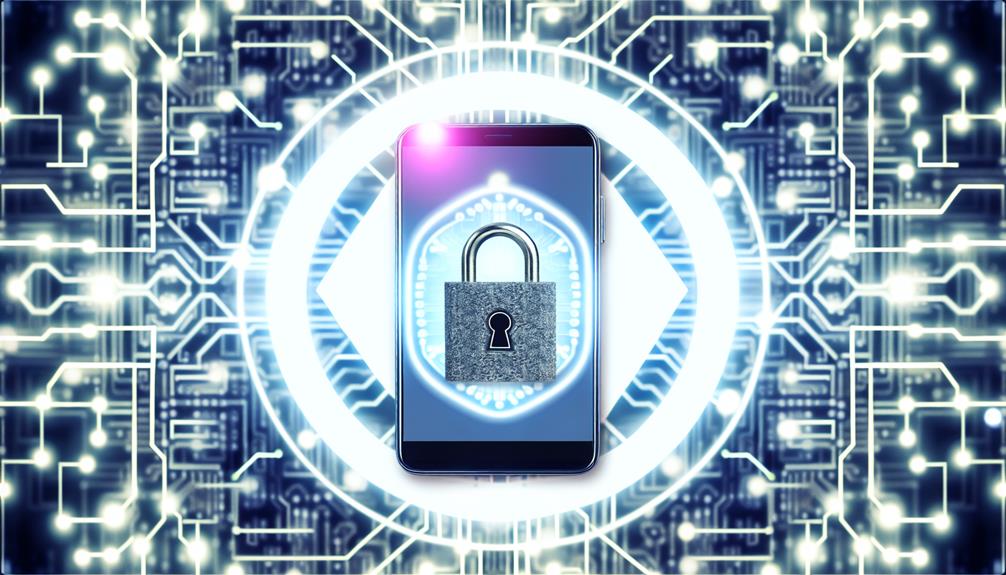It's funny how you just heard someone mention paying for coffee with crypto, yet you still aren't sure how it all works. Understanding the nuances of using digital currencies for everyday transactions can seem intimidating at first, but once you grasp the basics, it opens up a world of possibilities. From setting up a secure wallet to selecting the right payment method, there are steps you need to follow to guarantee a smooth experience. Curious about how to navigate this modern payment landscape? Let's explore the essentials together.
Understanding Cryptocurrency Basics
When you immerse yourself in the world of cryptocurrency, it's essential to grasp the basics that underpin this digital currency revolution. Understanding cryptocurrency types is the first step in traversing this complex landscape. Bitcoin, Ethereum, and Ripple are among the most recognized names, but countless other cryptocurrencies exist, each serving different purposes and featuring unique technologies. Bitcoin, for instance, is primarily seen as a digital gold, while Ethereum introduces smart contracts, enabling decentralized applications.
At the core of these cryptocurrencies lies blockchain technology, a decentralized ledger that records all transactions transparently and securely. This technology eliminates the need for intermediaries, allowing for peer-to-peer transactions that are both swift and cost-effective. Each block in the chain contains a list of transactions, and once a block is added, it can't be altered, ensuring data integrity.
Moreover, the decentralized nature of blockchain technology means that no single entity controls the entire network, reducing the risk of fraud or censorship. Understanding how these systems work together can empower you to make informed decisions when engaging with cryptocurrencies.
As you learn about cryptocurrency types and their underlying blockchain technology, you'll develop a clearer picture of how to interact with digital currencies effectively. This foundational knowledge not only enhances your awareness but also prepares you for the practical aspects of using crypto in everyday transactions.
Setting Up a Crypto Wallet
To effectively manage your cryptocurrency, setting up a crypto wallet is vital. A wallet serves as your digital vault, allowing you to send, receive, and store your crypto securely. There are several wallet types, each offering unique features tailored to different needs. Understanding these can help you choose the right one for your situation.
Here are three main wallet types to take into account:
- Hot Wallets: These are connected to the internet, making them convenient for daily transactions. They usually come with user-friendly interfaces but may lack robust security features, leaving them more vulnerable to hacks.
- Cold Wallets: Cold wallets are offline storage solutions, often in the form of hardware or paper wallets. While they're less convenient for everyday use, they offer superior security for long-term holdings, as they aren't exposed to online threats.
- Mobile Wallets: These wallets are designed for smartphones, providing a balance between convenience and security. Many mobile wallets have advanced features like QR code scanning, making transactions quick and easy.
When setting up your wallet, reflect on important wallet features such as security measures (like two-factor authentication), user experience, and backup options. It's essential to keep your private keys secure, as they grant access to your funds. By understanding wallet types and features, you can confidently choose a crypto wallet that aligns with your needs, ensuring your cryptocurrency is both accessible and protected.
Choosing the Right Payment Method

After you've set up your crypto wallet, the next step is understanding how to choose the right payment method for your transactions. With various crypto payment options available, it's essential to evaluate which one aligns best with your needs. Consider factors like transaction fees, speed, and the type of merchants that accept your chosen cryptocurrency.
Here's a quick comparison of popular crypto payment methods:
| Payment Method | Transaction Fees |
|---|---|
| Credit/Debit Cards | Low to Medium |
| Direct Crypto Transfer | Variable |
| Payment Processors | Medium |
| Mobile Wallets | Low |
| Instant Payment Services | Low to Medium |
When choosing your method, think about how often you plan to use crypto for payments. If you're making frequent transactions, you might favor options with lower fees, even if they take a bit longer to process. On the other hand, if you're looking for convenience, payment processors can simplify the process, albeit sometimes at a higher cost.
Moreover, keep in mind the security of your transactions. Some methods offer better fraud protection than others, which can be a deciding factor for many users. Overall, weigh the pros and cons of each crypto payment option, and select one that not only minimizes transaction fees but also meets your specific purchasing needs.
Making Your First Purchase
Making your first purchase with cryptocurrency can be an exciting yet intimidating experience. You might be wondering where to start or how to navigate the world of digital currencies. Fortunately, many businesses are increasingly adopting digital currency acceptance, making it easier than ever to spend your crypto. Here's a quick guide to help you make that first purchase smoothly:
- Choose a Crypto Payment Platform: First, select a reliable crypto payment platform. Options like Coinbase, BitPay, or Binance offer user-friendly interfaces and support various cryptocurrencies. Verify the platform you choose is compatible with the vendor you plan to purchase from.
- Find a Merchant: Next, look for a merchant that accepts cryptocurrency. Many online retailers now display a "Pay with Crypto" option at checkout. It's helpful to check if the merchant's website lists the cryptocurrencies they accept, as some may only accept Bitcoin or Ethereum.
- Complete Your Purchase: Finally, when you're ready to make your purchase, follow the prompts for crypto payment. You'll typically be given a QR code or a wallet address to send your digital currency to. Double-check the amount and the recipient address before confirming the transaction, as crypto transactions are irreversible.
Ensuring Transaction Security

When you're paying with crypto, ensuring transaction security is essential. Always use secure wallets to protect your assets, verify recipient addresses to avoid mistakes, and enable two-factor authentication for an added layer of safety. Taking these steps can greatly reduce your risk of fraud and loss.
Use Secure Wallets
To guarantee your cryptocurrency transactions are secure, using a reliable wallet is vital. Choosing between hardware wallets and software wallets can greatly impact your security. Here's a quick guide to help you decide:
- Hardware Wallets: These are physical devices that store your crypto offline. They're less vulnerable to online hacks, making them an excellent option for long-term storage of your assets.
- Software Wallets: These are applications or programs installed on your computer or smartphone. While they're convenient for everyday transactions, make sure you choose reputable ones and keep them updated to reduce security risks.
- Backup and Recovery: Always back up your wallet. Whether you're using hardware or software, having a recovery phrase or seed phrase is essential. This guarantees you can regain access to your funds if your wallet is lost or damaged.
Verify Recipient Addresses
Verifying recipient addresses is essential for guaranteeing your cryptocurrency transactions are secure. When you're sending crypto, you need to double-check that the address you're using is correct, as even a single character error can lead to a lost transaction. Different cryptocurrencies have distinct address formats, so familiarize yourself with the specific format for the currency you're using. For instance, Bitcoin addresses typically start with a '1', '3', or 'bc1', while Ethereum addresses begin with '0x'.
It's also important to be aware of the transaction fees associated with sending crypto. Some platforms may charge higher fees for incorrect or inefficient transactions, especially if they require a quick resolution to recover lost funds. To minimize costs and guarantee security, take the time to verify the address before hitting send.
Using a QR code for the recipient's address can help eliminate human error when entering the digits manually. Always confirm with the recipient through a trusted channel if you're unsure about the address. By taking these steps, you can considerably reduce the risk of making costly mistakes in your cryptocurrency transactions.
Enable Two-Factor Authentication
One way to enhance the security of your cryptocurrency transactions is by enabling two-factor authentication (2FA). This additional layer of protection guarantees that even if someone obtains your password, they can't access your account without another form of verification. Utilizing 2FA is a smart move in today's digital landscape, where security protocols are essential.
Here are three steps to enable 2FA:
- Choose an Authentication App: Download a trusted authentication app, like Google Authenticator or Authy. These apps generate temporary codes that change every 30 seconds.
- Link Your Account: Go to your cryptocurrency exchange or wallet settings. Find the 2FA option and scan the QR code using your authentication app.
- Backup Your Codes: Write down the backup codes provided during the setup. Store them securely, as they'll help you regain access if you lose your device.
Tips for Using Crypto Effectively
Five essential tips can help you navigate the world of cryptocurrency payments effectively. Understanding how to use crypto can maximize your benefits while minimizing risks. Here's a quick guide to keep in mind:
| Tip | Description | Benefits |
|---|---|---|
| Choose the Right Wallet | Select a wallet with low transaction fees and strong security features. | Security and cost-effectiveness. |
| Monitor Transaction Fees | Be aware of transaction fees, especially during high network congestion. | Save money while making payments. |
| Utilize Crypto Rewards | Leverage rewards programs from crypto credit cards or platforms. | Earn crypto back on purchases. |
| Keep Records | Maintain detailed records of all transactions for tax purposes. | Simplifies tax season. |
| Stay Informed | Follow crypto news to adapt to market changes and regulations. | Better decision-making. |
When you're ready to make a payment, always double-check the recipient's address to avoid costly mistakes. Additionally, consider the volatility of cryptocurrencies; timing your transactions can be vital to minimizing losses. By choosing wallets with low transaction fees, you can save on costs, especially if you're making frequent payments.
Lastly, remember that while crypto rewards can enhance your purchasing power, they come with their own set of risks. Stay informed and make informed choices to enjoy the advantages of using cryptocurrency effectively. With these tips, you'll be better equipped to navigate the dynamic world of crypto payments.
Frequently Asked Questions
Can I Use Crypto for Everyday Purchases Like Groceries?
Yes, you can use crypto for everyday purchases like groceries, but it depends on the grocery store's acceptance of crypto payment options. Check if your local stores support it to make seamless transactions.
Are There Fees Associated With Crypto Transactions?
Yes, there're fees associated with crypto transactions. You'll encounter transaction costs and network fees, which vary depending on the cryptocurrency and market conditions. Always factor these into your budget when using crypto for payments.
How Do I Convert Crypto Back to Fiat Currency?
To convert crypto back to fiat currency, explore various crypto exchange options. You can use platforms that offer fiat conversion methods, allowing you to sell your crypto for cash or deposit it directly into your bank.
What Happens if I Send Crypto to the Wrong Address?
If you send crypto to the wrong address, it's usually irreversible. You might explore crypto recovery options, but success isn't guaranteed. Always double-check address verification tips before sending to avoid costly mistakes.
Can I Receive Refunds in Cryptocurrency?
Yes, you can receive refunds in cryptocurrency, but it depends on the merchant's crypto refund policies. Be mindful of exchange rate fluctuations, as the refund amount in crypto may differ from the initial payment value.
Conclusion
In the domain of digital currency, think of your crypto wallet as a treasure chest, safeguarding your valuable coins. Just as a seasoned sailor navigates stormy seas with a sturdy ship, you too must equip yourself with proper tools and knowledge to traverse the world of cryptocurrency. By following these guidelines, you'll not only protect your assets but also open up the potential of a new financial landscape. Embrace the journey, and let your crypto adventure begin with confidence.
